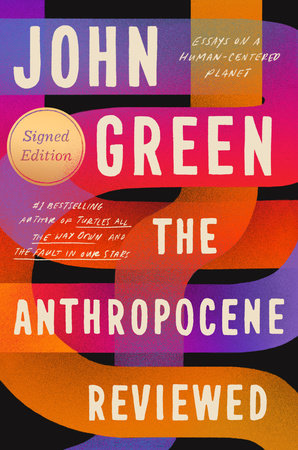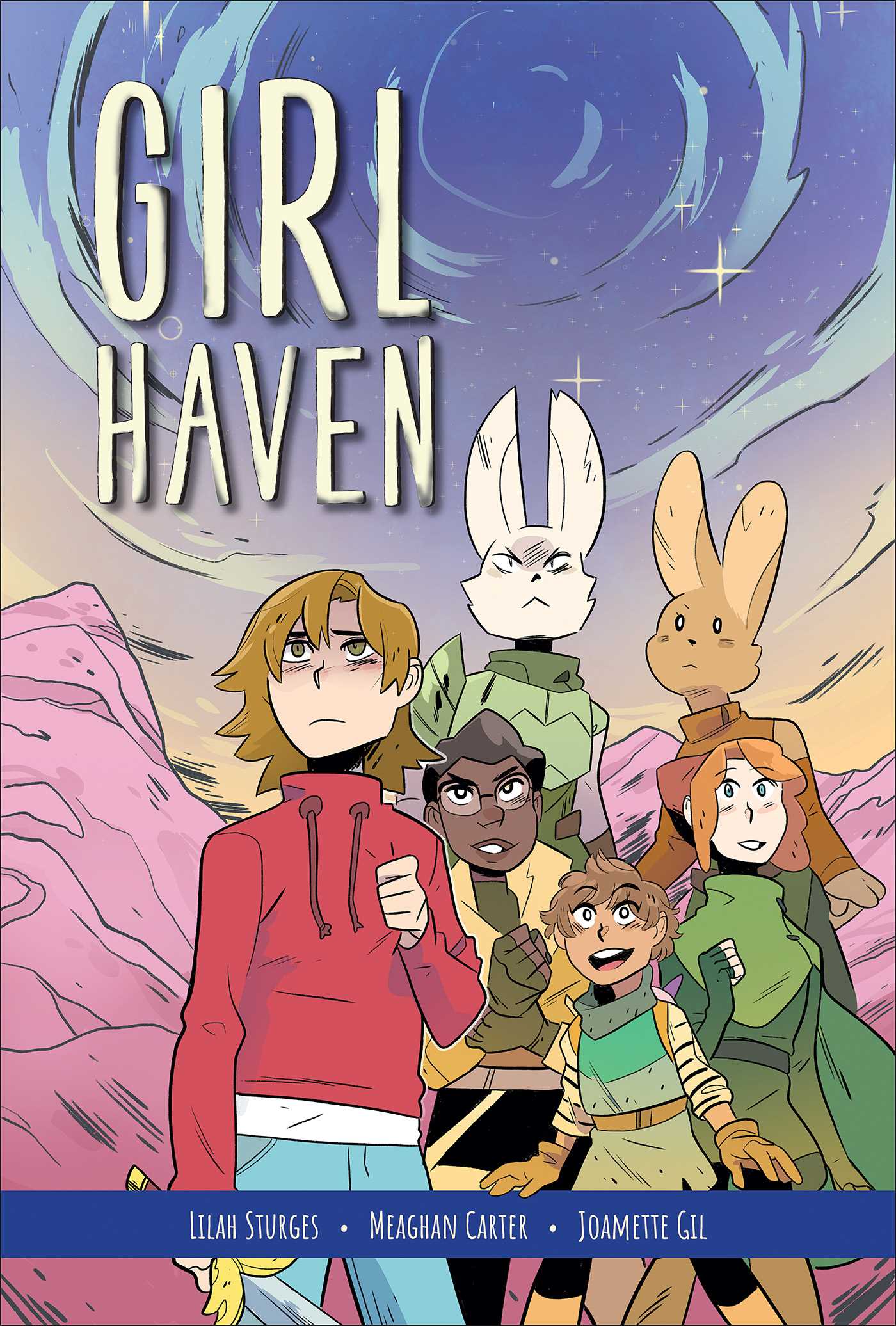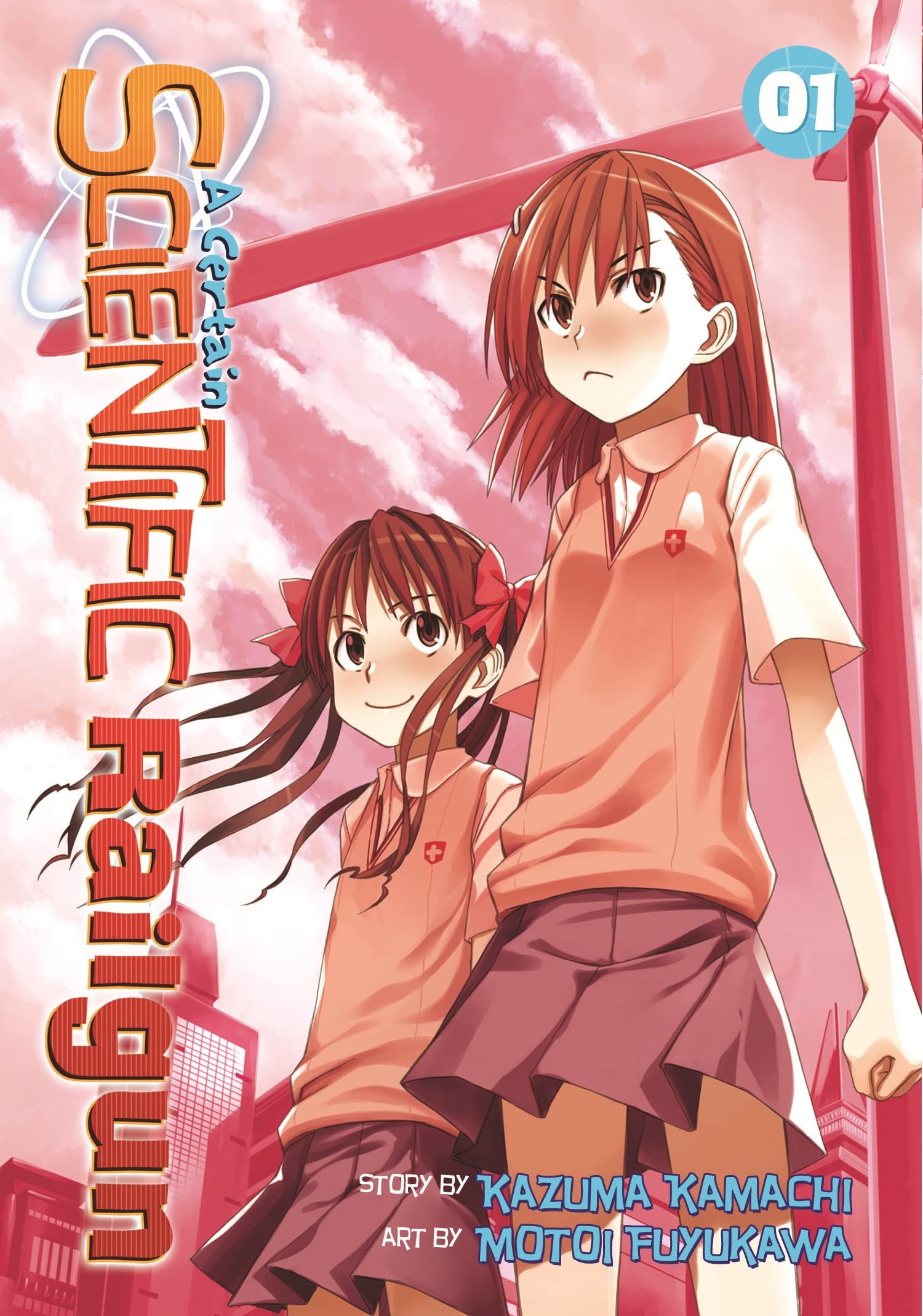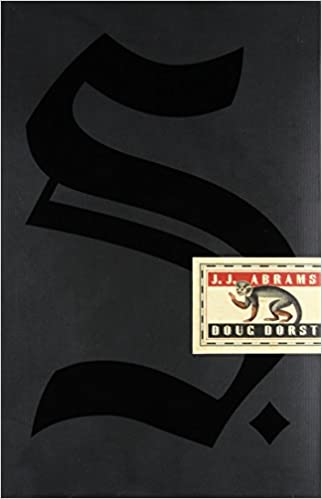Best Books of 2021
A quick note on the methodology of this list. I read a lot of manga this year, but the majority of it was digitally via the Shonen Jump app; that manga will be covered in its own separate list. There were a few manga that I picked up physical copies of and read on its own; those will be covered here.
Graphic novels & physical manga are counted as books for this list's purposes, partly because I didn't read a huge number of prose books this year. Also, there wasn't a single book bad enough to qualify for a "worst of the year" list.
#1
Of all these lists, this was the easiest #1 slot to give out by far. How could it be anything but The Anthropocene Reviewed? This is a book I'll carry with me for a long time.

Having now written five novels and co-written an additional two, John Green here turns to nonfiction. The Anthropocene Reviewed is an idea John had for grading various aspects of the human experience on a five-star scale, like Diet Dr. Pepper, the Lascaux Caves, Halley's Comet, and Humanity's Capacity for Wonder.
The Anthropocene Reviewed began life as a podcast, and has now been turned into a book. And full disclosure: I haven't finished it yet. The essays in Anthropocene are usually just a few pages, but they are emotionally weighty and incredibly beautiful. They're hard to binge. You read one, sit with it, and come back later and read another one.
I don't stop that from letting me review and rank this book of reviews myself, though. (One of my favorite books of all time is a French tome called "How To Talk About Books You Haven't Read," which I have of course never finished.)
Over the last two years, it feels like humanity as a species has had a collective crash course in our own mortality. It's been so easy to be confronted with the terrible parts of the world, that sometimes a little beauty and hope is a necessary and healing thing. And The Anthropocene Reviewed is that book, partly written during the pandemic and thus seemingly a direct counter to some of that hopelessness.
I cannot honestly describe The Anthropocene Reviewed as anything other than a spiritual experience. A series of loosely connected essays becomes a story about our world, ourselves, and the relationship between those two things. As this and other sources have reminded me so long, we are not separate from the world, but part of it. "What a blessing to be Earth loving Earth."
#2
There's quite a few standalone graphic novels I read and enjoyed this year; it's a seemingly very healthy market, and frequently a queer one as well. And my best graphic novel experience of the year was Girl Haven.

I bought Girl Haven on a whim, because a friend got it and heard it was good, and I was looking for good books earlier in the year. Girl Haven just so happened that I received it the weekend I also received my vaccine. The vaccine shot knocked me on my ass for two days, and it was hard to do very much other than lie around. But Girl Haven was a quick read and mostly pictures, so I could at least read that.
Girl Haven is one of the best depictions of gender questioning and coming out as trans that I have read in a piece of mainstream media. Ash is a young boy whose mother disappeared into another dimension three years prior. When Ash and his friends find their way into that dimension, they find that this world is a world where only girls live. And yet somehow Ash was able to arrive here - so what does that mean for him?
There are a lot of trans coming-out stories that involve fate intervening to alert the main character that they might not be the gender they thought they were. It's a common fantasy among trans people to time travel back in time and tell your younger self what's going on, to avert years of heartache and confusion. But where Girl Haven becomes really special for me is how it subverts this expectation. Not long after arriving, Ash and his friends actually do find a group of boys who think that Ash could be their prophesized king and savior. So while the initial trip to this "girl haven" helped Ash to start questioning things, the story ultimately positions itself so that Ash has to be the one to do the work and make the decision for himself about what gender to be - and, indeed, Ash ends up coming out as a girl in the climax.
Girl Haven is a sweet book, and the best thing it could do would be to be that introduction to a new world that other young trans people might need, which Ash is lucky enough to receive. In my case, I found the story deeply relateable, smartly told, and resolved really sweetly. I highly recommend it.
#3
There's a bit of a bittersweet twinge to this one. Manga, I've now learned the hard way, frequently does not stay in print very long. The printed edition of any given series usually lasts many volumes, and it just doesn't make sense for a publishing house to keep every volume it's ever produced in active circulation. That unfortunately makes it difficult to acquire certain series. Still, I'm glad I found A Certain Scientific Railgun vol 1, even if I may not be able to read very much of the series.

In the 2000s, Kazuma Kamachi began a series of light novels entitled "A Certain Magical Index," a series about an alternate universe in which many people have supernatural abilities. Its protagonist is a boy whose ability is to cancel out others' abilities, which is a superpower that I personally find really boring.
However, Magical Index has had several spinoffs, and its most popular one is the manga series A Certain Scientific Railgun. As the title implies, it focuses more on the sci-fi side of this alternate reality than the fantasy side that Magical Index does. Its protagonist is Mikoto Misaka, a girl who can control electricity, and whose ability to fling projectiles at lightning speed have earned her the nickname "Railgun".
There's not a lot to this series other than that. But I was drawn in by how unabashedly girly it is, while also remaining very much a shonen action series. That's uncommon. Nearly the entire main cast is girls, except for the protagonist of Magical Index who pops up occasionally in a supporting role. The series is mostly about Mikoto and her core friendgroup, engaging in battles with people and uncovering the city's dark secrets.
Scientific Railgun is still running, with new volumes being produced and subsequently translated into English. But upsettingly, Seven Seas, which owns the license, only keeps the first couple volumes and the most recent few in print, which makes it very difficult and expensive to obtain further volumes of this series. Still, this peek into the world was a great one, and I do hope to read more of it in the future.
#4
I've been a fan of the film Scott Pilgrim vs the World since it came out in theaters. It's the last movie I saw in theaters before heading off to college, and I've watched it many times since. Scott Pilgrim vs the World is a funny and extremely creative adaptation that pays homage to countless other series and types of media. Most impressively, it adapts moments from the comics directly, imitating the comic book form in ways I've never seen anywhere else before or since. So it was a matter of time before I made my way to the Scott Pilgrim series of comic books, but this year I finally arrived there.

Scott Pilgrim vs the World set my expectations high. It's a memorable film, and I've seen it so many times and quoted it at length with my friends ("BREAD MAKES YOU FAT???"), that I had very specific expectations for the Scott Pilgrim books. Those expectations were not met - and what I found was in some ways better and in some ways worse.
So let me set the scene real quick. The Scott Pilgrim series was published between 2004 and 2010, and the film came out in August 2010, a month after the final book was published. Observe that that is not quite enough time to tell a story fully accurate to the comics. Only the first two books, "Precious Little Life" and "Vs the World," are adapted in the movie pretty accurately.
So, the Scott Pilgrim series is a story about Scott Pilgrim meeting and dating Ramona Flowers, and subsequently battling her seven evil exes. Each book covers one of the exes (book 5 covers a pair of twins that are always together). What I noticed is that starting in book 3, the movie cuts a LOT out. Whereas Scott takes several encounters and a lot of training to beat the third ex, in the movie the encounter happens in a single scene.
I'm going to hazard a guess that about four of the books were finished by the time the film went into production - but Bryan Lee O'Malley was on hand enough to give some guidance to where the story should end up. Books 3 and 4 feel very long. They do come together eventually, but there's just a lot of filler that the movie wisely cut.
But books 5 and 6 are really good, far better than the movie. They make the last act of the movie feel really rushed, actually. As the series culminates, the books do a couple of things that the movie misses out on. First, it does a better job of giving proper resolutions to a lot of its supporting cast, who just get throwaway lines of resolution in the movie. Secondly, it actually gives Ramona a much better ending to her character arc. I think it also puts Scott and Ramona in a much stronger position to try to grow and be better people together at the end.
Scott Pilgrim vs the World (the movie) is a flabbergasting thrill ride of whiz bang pop culture, extremely fun and creative but with a decent heart to it. Scott Pilgrim the book series is slower, but also a bit more accurate to the feeling of being part of a friend group. People hang out at parties, they drift away, they come back together a little to help fight each other's battles. I love watching the Scott Pilgrim movie, but I think I liked living in the world of the Scott Pilgrim books a little better.
#5

This book is a little bit hard to talk about. In the early 2010s, fresh off of Star Trek and a few years away from Star Wars, J.J. Abrams came up with the concept for a book which would include a lot of little extra documents and goodies crammed into its pages - newspaper clippings, postcards, even napkins with scribblings on them. He commissioned writer Doug Dorst to come up with S., an impressive tome that I have tried and failed multiple times to finish, including this year.
S. takes the form of a library book (inside a slipcover case so you don't lose any of the little bits and bobs) called "Ship of Theseus." This book is supposedly the nineteenth and final novel written by the fictional author V.M. Straka. The novel itself is about an amnesiac man who finds himself in a small fishing town, and subsequently goes on a series of adventures, including a pirate ship and a bloody rebellion.
But that's not all that S. is about, because in the margins of this book are scribbled notes written by two people reading this book. The book's owner is a student working on this book as part of his thesis, and the book's second author is another student who found the book, read it, and started writing notes to its owner on a whim. The two trade scribbles back and forth throughout the entire book, and as their relationship progresses through time, the color pens they use also changes, so that it's a bit easier to keep track of when in time each note is being written.
In theory, this SOUNDS like House of Leaves, a famously labyrinthine book heavily inspired by the works of Jorge Luis Borges, which was filled with footnotes (many of which lead to nothing) and included a substantial frame narrative and substantial appendices, including an entire secondary novella within one of the appendices. House of Leaves is one of my favorite books, a marriage between a horror story and a love story, and it's extremely complicated to read.
But in practice, S. is mostly a love story between the two readers of "Ship of Theseus" as they chase down leads in a global conspiracy against the author V.M. Straka and people who ally themselves with him. It's very J.J. Abrams for most of the plot's intrigue to be in the margins regarding the story's metatextual narrative, rather than in the novel itself. Honestly, I found the metaplot very hard to follow, but the love story is nice. And while the novel "Ship of Theseus" may have been sort of meant more as a canvas for the love story than anything else, the novel "Ship of Theseus" itself is very well-written. It's visual, it's engaging, it's extremely political (and still relevant today), and it reads plausibly as a book that could have believably been written in the early 1900s.
On all levels, S. is a great read. The book's major downside is that it is so complicated to read that if I put it down for too long, I forget all the details I've been trying to precariously hold in my head. But that just means it'll still feel fresh next time I try to read it. Maybe next time I'll even finish it.
RUNNERS-UP

#6
The Lightning Thief was technically a re-read, and thus its ability to qualify for this list is hazy. However, the last time I read The Lightning Thief, I didn't care for it, but this time I enjoyed it a lot more and am hoping to continue reading the series. It's a fun YA spin on Greek mythology in a contemporary setting, but most impressive to me in 2021 is how unquestionably neurodivergent its main character is, and that his stranger qualities end up being crucial to the story's progression and resolution.
#7
Ranma 1/2 vol 1-4 is very much a comfort read, but I think still deserves a place on this list. It's a manga which was formative for many trans people I know, but which I missed out on growing up (I went for Inuyasha and Fruits Basket instead). The genderbender martial arts manga features a genderfluid protagonist who spends a lot of time engaging in very feminine activites, such as ice skating and rhythmic gymnastics. It's a strange and sweet kind of escapism.
#8
The only superhero comic to make my list this year is Shadow of the Batgirl, a standalone graphic novel about a young Cassandra Cain and her journey to becoming the Batgirl. Cassandra Cain is a traumatized ex-assassin who's illiterate, mute, and alone, but she escapes her abusive home and takes shelter in Gotham, and with the help of a ramen restaurant owner and Barbara Gordon, she learns how to become a hero she's proud to be. It's a sweet coming of age story with beautiful art, and a lovely introduction to a less popular superhero.
#9
A beautiful manga recommended to me again and again was Witch Hat Atelier vol 1, and it did indeed turn out to be right up my alley. This story - about a young girl who discovers magic and is subsequently whisked into the forbidden world of witchcraft - has a lot of similarities to other stories I've loved this year, including The Owl House (TV) and Atelier Sophie (game). Still, the sweet story and gorgeous art were hard for me to not love.
#10
Finally, the tenth item on this list is The Witch Boy, a queer coming-of-age graphic novel by Molly Knox Ostertag. Similarly to Girl Haven, The Witch Boy is a story about a boy who doesn't really belong with other boys, and finds himself drawn to magic that only girls can use. His coming out about this to his parents at the story's end really reads as a trans coming out moment. However, the main character never actually changes his gender identity, and the boys' magic he shows little interest in is shapeshifting, so elements of the story didn't speak to me as much as Girl Haven.